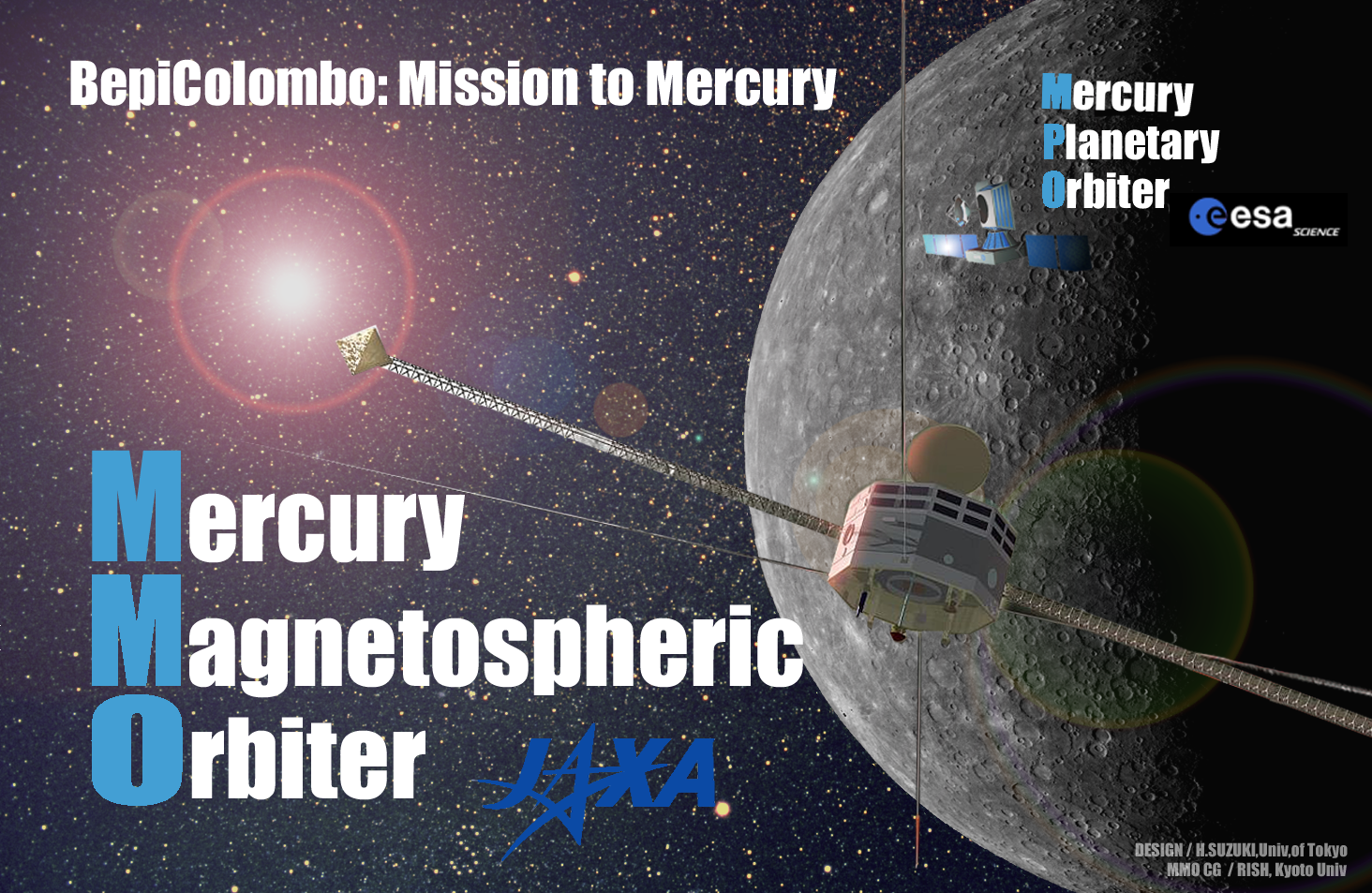La mission est composée de deux satellites :
-
MPO : Mercury Planet Orbiter
-
MMO : Mercury Magnetospheric Orbiter
MPO : Mercury Planet Orbiter
Overview of the instruments
-
BELA - BepiColombo Laser Altimeter
-
ISA - Italian Spring Accelerometer
-
MERMAG - MPO-Magnetometer (MERMAG includes the magnetometer on the MMO)
-
MERTIS - Mercury Radiometer and Thermal Infrared Spectrometer
-
MGNS - Mercury Gamma-Ray and Neutron Spectrometer
-
MIXS - Mercury Imaging X-Ray Spectrometer
-
MORE - Mercury Orbiter Radio-Science Experiment
MMO : Mercury Magnetosphere Orbiter
The Mercury Magnetospheric Orbiter (MMO) is a spin-axis stabilised spacecraft with a rotation rate of 15 rpm or spin period of 4s; the spin axis will be nearly perpendicular to Mercury’s equator. Altitude range is currently expected to be from 590 km to 11639 km – the apoherm is nearly 6 planetary radii from planet’s centre.
Overview of the instruments
-
MDM - Mercury Dust Monitor
-
MGF - Magnetometer
-
MPPE - Mercury Plasma Particle Experiment
-
MSASI - Mercury Sodium Atmospheric Spectral Imager
-
PWI - Plasma Wave Investigation
MPPE : Mercury Plasma/Particle Experiment
Mercury Plasma Particle Experiment (MPPE) is a comprehensive instrument package for plasma, high-energy particle and energetic neutral atom measurements. It consists of seven sensors. The first six sensors perform in-situ observations and cover the charged particle species and the energy range of interest from the space plasma physics point of view.
For the electrons: two Mercury Electron Analyzers (MEA1 and MEA2) mounted 90º apart for highresolution coverage, and High Energy Particle instrument for electron (HEP-ele).
For the ions: Mercury Ion Analyzer (MIA), Mercury mass Spectrum Analyzer (MSA), and High Energy Particle instrument for ion (HEP-ion).
The final sensor, Energetic Neutrals Analyzer (ENA) will detect energetic neutrals created via charge-exchange and will provide us with remote information on how plasma and neutral gas interacts in the Hermean environment.
Science goals
-
Structure, dynamics and physical processes in Mercury’s magnetosphere
-
Formation and characteristics of the small-scale magnetosphere
-
Solar wind contribution to the magnetospheric plasmas
-
Stability of the plasma sheet
-
Substorms at Mercury
-
Particle acceleration, trapping, and loss
-
Interaction between surface, exosphere and magnetosphere
-
Collision-less shock physics in the inner heliosphere







